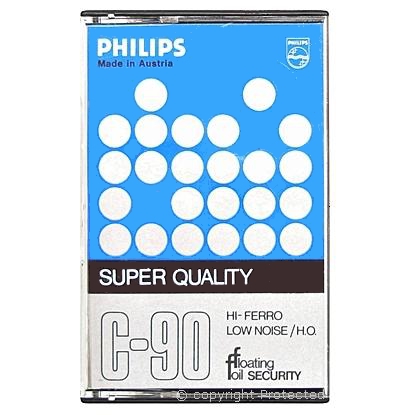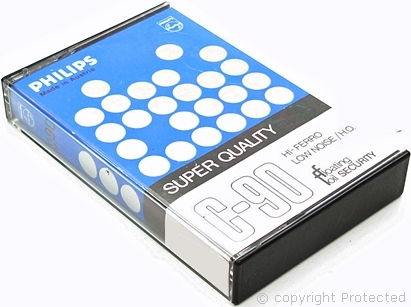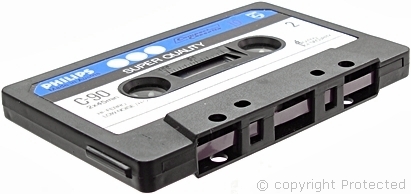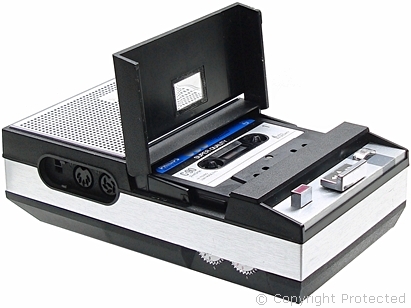Vintage Philips Cassette

This is a super quality high-ferrous low noise compact audiocassette manufactured by the Philips Corporation in Austria. The blue background with white dots is an iconic design most people will remember from the 80s. This is a vintage cassette, and it would be hard to find one today, but not impossible.
Box

Philips was always improving the compact cassette, and this one has the floating foil security to ensure that the spools rotate freely. The three silver dots on the spine are very reminiscent of their early design.
Super Quality C-90

Cassettes of the 80s period usually had very impressive graphs on the case to give the impression that it was worth the extra money. Since most people did not understand the meaning of the graphs, they often ended up with a cassette that appeared to be good from the outside but really did not perform well in practice.
Ferrous Particles

One quick and clever way of telling if a tape would have a good frequency response was from the colour of the actual tape. Generally, a tape that had a darker brown colour and a matt finish would be more superior in quality. Tapes that were very shiny and lighter in colour had less ferrous particles and often underperformed.
Ideally, a tape should have a shiny surface because that way there is less friction with the tape transport mechanism and it leaves less ferrous oxide residue; however, ferrous oxide coatings naturally form a matt finish.
This cassette incorporated an ingenious manufacturing method that allowed it to have a very thick ferrous coating that was semi-matt in finish. It did not look nice when compared to the cheap tapes that had a shiny gloss surface; however, the sound quality was much better.
Using a Philips Tape Recorder

Using a computer graphic equaliser, I boosted the upper and lower frequencies of an audio track to see if this tape could faithfully reproduce it, and it did very well compared to my modern tapes.